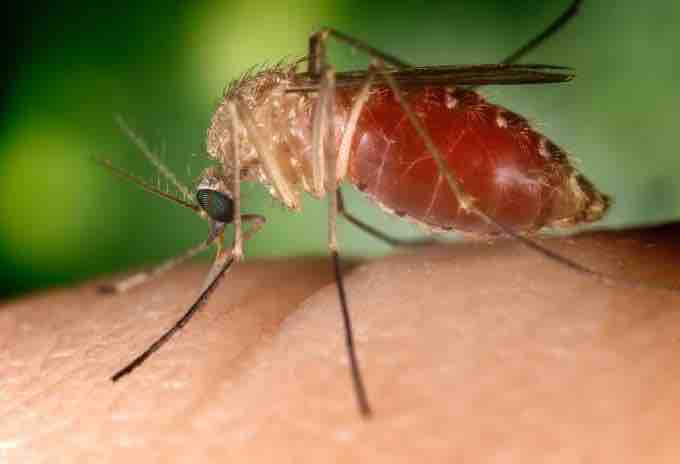West Nile virus (WNV) is a mosquito-borne zoonotic arbovirus belonging to the genus Flavivirus, and is found in temperate and tropical regions of the world .

Global distribution of West Nile virus
Global distribution of West Nile virus.
WNV was first identified in the West Nile subregion in the East African nation of Uganda in 1937. Prior to the mid 1990s, WNV disease occurred only sporadically and was considered a minor risk for humans. This was until an outbreak in Algeria in 1994, with cases of WNV-caused encephalitis, and the first large outbreak in Romania in 1996, with a high number of cases with neuroinvasive disease. WNV has now spread globally, with the first case in the Western Hemisphere being identified in New York City in 1999. The virus has now spread across the continental United States, north into Canada, and southward into the Caribbean Islands and Latin America. The US experienced one of its worst epidemics to date in 2012. WNV also spread to Europe, beyond the Mediterranean Basin, with a new strain of the virus recently identified in Italy (2012). WNV is now considered to be an endemic pathogen in Africa, Asia, Australia, the Middle East, Europe and in the United States.
The main mode of WNV transmission is by mosquitoes , the prime vector. WNV has been found in various species of ticks. However, current research suggests they are not important vectors of the virus. WNV infects various mammal species, including humans. It has also been identified in reptilians (including alligators and crocodiles) and amphibians. Birds, especially passerines, are the most commonly infected animal, and serve as the prime reservoir host. Many species - including humans - do not develop viral levels sufficient to transmit the disease to uninfected mosquitoes, and are thus not considered major factors in WNV transmission.

Transmission of the West Nile virus
The proboscis of a female mosquito pierces the epidermis and dermis to allow it to feed on humanblood from a capillary: this one is almost fully engorged. The mosquito injects saliva which contains an anesthetic, and an anticoagulant into the puncture wound; and in infected mosquitoes, the West Nile virus.
Approximately 80% of West Nile virus infections in humans cause no symptoms. West Nile fever is the manifestation of symptoms, with an incubation period typically between 2 and 15 days. Symptoms may include fever, headaches, fatigue, muscle pain or aches, malaise, nausea, anorexia, vomiting, myalgias and rash. Less than 1% of the cases are severe and result in neurological disease when the central nervous system is affected. People of advanced age, the very young, or those with immunosuppression are most susceptible.
The specific neurological diseases which may occur are:
- West Nile encephalitis, which causes inflammation of the brain
- West Nile meningitis, which causes inflammation of the meninges (the protective membranes that cover the brain and spinal cord)
- West Nile meningoencephalitis, which causes inflammation of the brain and surrounding meninges
- West Nile poliomyelitis (spinal cord inflammation, which results in a syndrome similar to polio that may cause acute flaccid paralysis).
Currently, no vaccine against WNV infection is available. The best method to reduce the rates of WNV infection is by public mosquito control (particularly the elimination of standing water) and by personal protection (mosquito nets and repellent).